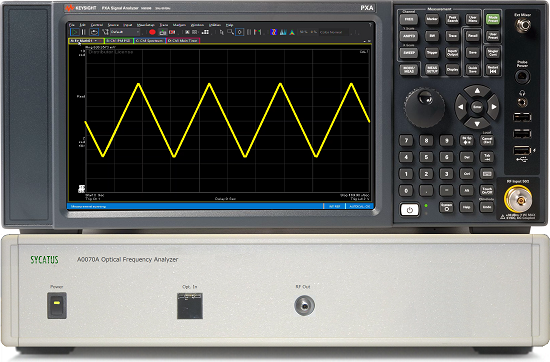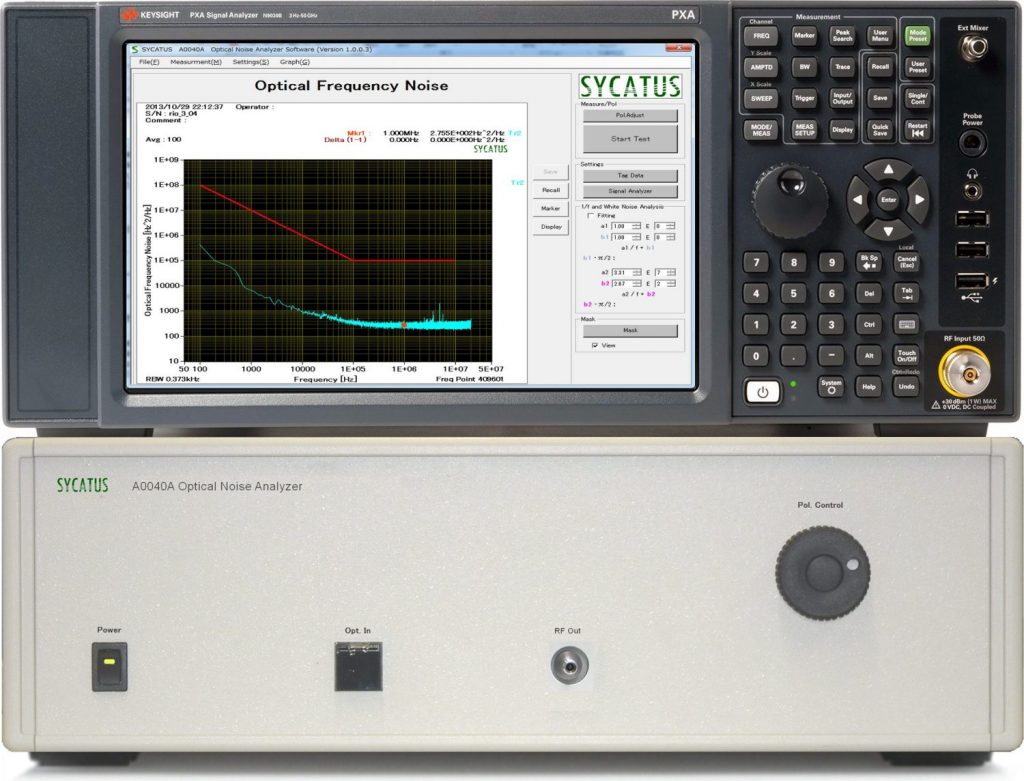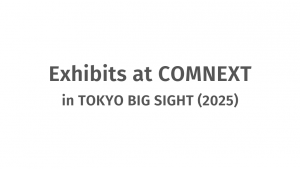Optical measurement has become an integral part of modern technology. The technology is used in a variety of fields, including telecommunications, medical, manufacturing, and entertainment. This article explains the basic concepts of optical measurement as well as the needs of each industry.
Contents
- What is Optical Measurement?
- Main Instruments and Measurement Items Used in Optical Measurement
- Optical Measurement Needs By Industry
- Latest Optical Measurement Technologies
- SYCATUS Product Information
- Conclusion
- Feel free to contact us.
What is Optical Measurement?
Basic Concept of Optical Measurement
Optical measurement is a technique for evaluating the optical characteristics of devices, equipment or systems that use light. Optical measurement is used in a wide variety of fields, including telecommunications, manufacturing, medical, and entertainment.
Importance of Optical Measurement
Optical measurement has become an indispensable technique for performance evaluation and quality control of optical devices, equipment, and systems. Accurate measurement of optical properties improves the performance and reliability of the measured objects.
In order to operate optical measurement efficiently, it is necessary to select the appropriate measurement method and measurement equipment for each application.
Main Instruments and Measurement Items Used in Optical Measurement
Light Sources
The following optical measurements apply to light sources such as semiconductor lasers and optical transmitters.
- Optical power meters: measure optical intensity and electro-optical conversion efficiency
- Optical spectrum analyzers: analyze the wavelength dependence of light intensity
- Optical wavelength meters: measure precise wavelengths
- Optical oscilloscopes: evaluate the modulation waveform of light
- Optical component analyzers: measure transmission characteristics from electrical modulation signals to optical modulation signals
- Beam profiler: measures the intensity distribution of laser light in the direction perpendicular to the direction of propagation
- RIN measurement system: evaluates the intensity noise of light
- Linewidth measurement system: evaluates the spectrum purity of light
Optical Transmission Media
The following optical measurements are applied to optical transmission media such as optical fibers and optical waveguides and to the space where light propagates.
- Optical power meters: measure the wavelength dependence of optical loss
- Polarization analyzers: analyze the polarization state of light
- OTDR (Optical Time-domain Reflectometer): detect fiber loss distribution and faults
- Chromatic dispersion analyzers: measure the wavelength dependence of light propagation speed
- PDL (Polarization Dependent Loss) meter: evaluates the polarization dependence of optical loss
- LiDAR (Light Detection and Ranging): measures the distance to an object
- OCT (Optical Coherence Tomography): uses light interference to image the fine structures inside an object
Photodetectors
The following optical measurements are applied to light-receiving elements such as photo-detectors and optical receivers.
- Source measure units: measure the dark current and the wavelength dependence of photoelectric conversion efficiency
- Optical component analyzers: measure the transfer characteristics from optical modulation signals to an electrical demodulation signals
- Oscilloscopes: evaluate the waveform of an electrical demodulation signal
- Bit error rate testers: measure the error rate of an electrical demodulation signal
Optical Measurement Needs By Industry
Telecommunication Industry
In optical communications, in order to ensure stable transmission and further expand communication capacity, the majority of the above optical measurements are used at all stages of development, manufacturing, operation, and maintenance of semiconductor lasers as light sources, optical fibers and optical waveguides as transmission media, photodetectors as light receiving elements, and optical transceivers that integrate these components.
Manufacturing Industry
In the manufacturing industry, the use of laser processing machines has become commonplace, and optical measurements such as beam profilers are essential for their control. In addition, optical length measurement such as LiDAR is used to control product quality and optimize manufacturing processes. In particular, optical measurement is essential in the manufacture of semiconductors and optical lenses.
Medical Field
In the medical field, diagnostic technologies that apply optical measurement, such as endoscopes using optical fibers and medical examinations using OCT are evolving.
Entertainment Industry
In optical equipment used for entertainment, such as projection mapping and laser shows, precise optical measurements, such as beam profilers, are becoming important to maximize visual effects.
Latest Optical Measurement Technologies
Optical Measurement Trends
Optical measurements over a wider range of optical intensities, wavelengths, and modulation bands are required in all areas of communications, manufacturing, medical, and entertainment. In addition, methods that actively exploit the interferometric nature of light, such as digital coherent communications, FMCW LiDAR, and OCT, require the evaluation of advanced spectrum purity.
Latest Optical Measurement Applications
Laser light is essential for the realization of quantum computing and quantum communications, and the laser light used in these fields requires precise beam control, intensity stability, and a high degree of spectral purity. These characteristics must be measured accurately and with high reproducibility.
SYCATUS Product Information
SYCATUS provides innovative optical device measurement solutions in the fields of communications and sensing.
Modulation characteristics evaluation “A0070A Optical Frequency Analyzer”

The A0070A Optical Frequency Analyzer is a measurement system for accurately evaluating optical frequency modulation characteristics.
It can observe optical frequency modulation waveforms in real time and extracts optical frequency modulation components without being affected by optical intensity modulation. No prior adjustment of the measurement is required, the waveform is displayed immediately after laser input, and its high linearity enables accurate measurement even for wide optical frequency deviations.
The A0070A is an innovative system dedicated to the evaluation of lasers for FMCW LiDAR.
Laser noise evaluation “A0040A Optical noise (linewidth) analyzer” and “A0010A RIN (relative intensity noise) measurement system”

The A0040A Optical Noise Analyzer is a system dedicated to the measurement of laser optical frequency noise. It is the industry's first solution to evaluate laser linewidth as a power spectral density of optical frequency noise.
It covers a wide wavelength range from O-band to L-band and analyzes the white noise, 1/f noise, and Lorentz linewidth of lasers required for digital coherent transmission systems.
It is extremely sensitive and can evaluate Lorentz linewidths as low as 0.002 Hz. The dynamic range exceeds 100 dB, allowing correct measurements even when an optical frequency dither is used in the ITLA.
No pre-measurement adjustments are required, increasing measurement throughput and providing excellent accuracy and repeatability. The ability to evaluate optical frequency noise as a spectrum makes it ideal for evaluating optical frequency noise in specific frequency bands, such as digital coherent transmission and FMCW LiDAR.
Furthermore, the functions of the A0070A Optical Frequency Analyzer can be integrated, enabling evaluation of optical modulation and optical frequency noise characteristics of lasers for FMCW LiDAR in a single unit.

The A0010A RIN measurement system is ideal for measuring relative intensity noise.
It uses a high-sensitivity, low-noise optical receiver and Keysight Technologies' high-performance X series signal analyzers to evaluate the relative intensity noise spectrum over a wide measurement bandwidth of 50 GHz, the world's largest.
Conclusion
Optical measurement plays an important role in many industries, including fiber optic communications.
By using the right measuring instrument for the application and accurately measuring the required evaluation items, higher quality communication and optimization of manufacturing processes can be realized.
Utilization of the latest optical measurement technology will contribute to solving various problems in each industry and support future development.
Feel free to contact us.
As a pioneer in measurement in the field of optical communications and optical sensing, SYCATUS has been providing integrated hardware and software systems for measurement for over 20 years.
We will continue to provide innovative optical measurement technologies developed on the basis of expertise, uniqueness, and accuracy to the world.
We also provide expert advice on various questions related to optical measurement and the installation of system equipment.
Our experts are available to help you solve your optical measurement problems.


